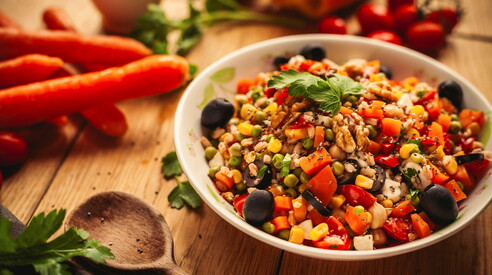Safe tanning? Diet plays a role, too.


in a healthy body
Sun protection starts on the plate. Yellow-orange and red fruits and vegetables can provide natural photoprotection, but they should be supplemented with traditional sunscreens for a true UV shield.
With the summer season and increased sun exposure, it becomes important to protect ourselves from UV rays. In addition to external phytocosmetics such as sunscreen, what we eat can also make a difference, or at least that's what some studies and scientists claim. In particular, antioxidant nutrients, such as carotenoids, provide natural photoprotection. Carotenoids are plant pigments found primarily in yellow, orange, and red fruits and vegetables . Among the most studied and well-known are beta-carotene, a precursor to vitamin A, and lycopene. These are powerful antioxidants capable of neutralizing ROS (reactive oxygen species) produced by UV rays, which are responsible for premature skin aging, damage to skin cells and DNA, and an increased risk of skin cancer.
Several clinical studies have demonstrated these positive effects, but it's difficult to establish a serious and reliable clinical protocol. The photoprotective effect isn't immediate, but it's a valuable natural support that works from within. Since carotenoids are fat-soluble, it's best to consume them with healthy fats, such as extra virgin olive oil, to promote absorption. Nutrition thus becomes our ally: it strengthens the skin's defenses and improves its appearance and health. However, nutrients don't fully replace sunscreen, but work synergistically with it, offering a double-layered defense: internal and external.
More on these topics:
ilmanifesto





